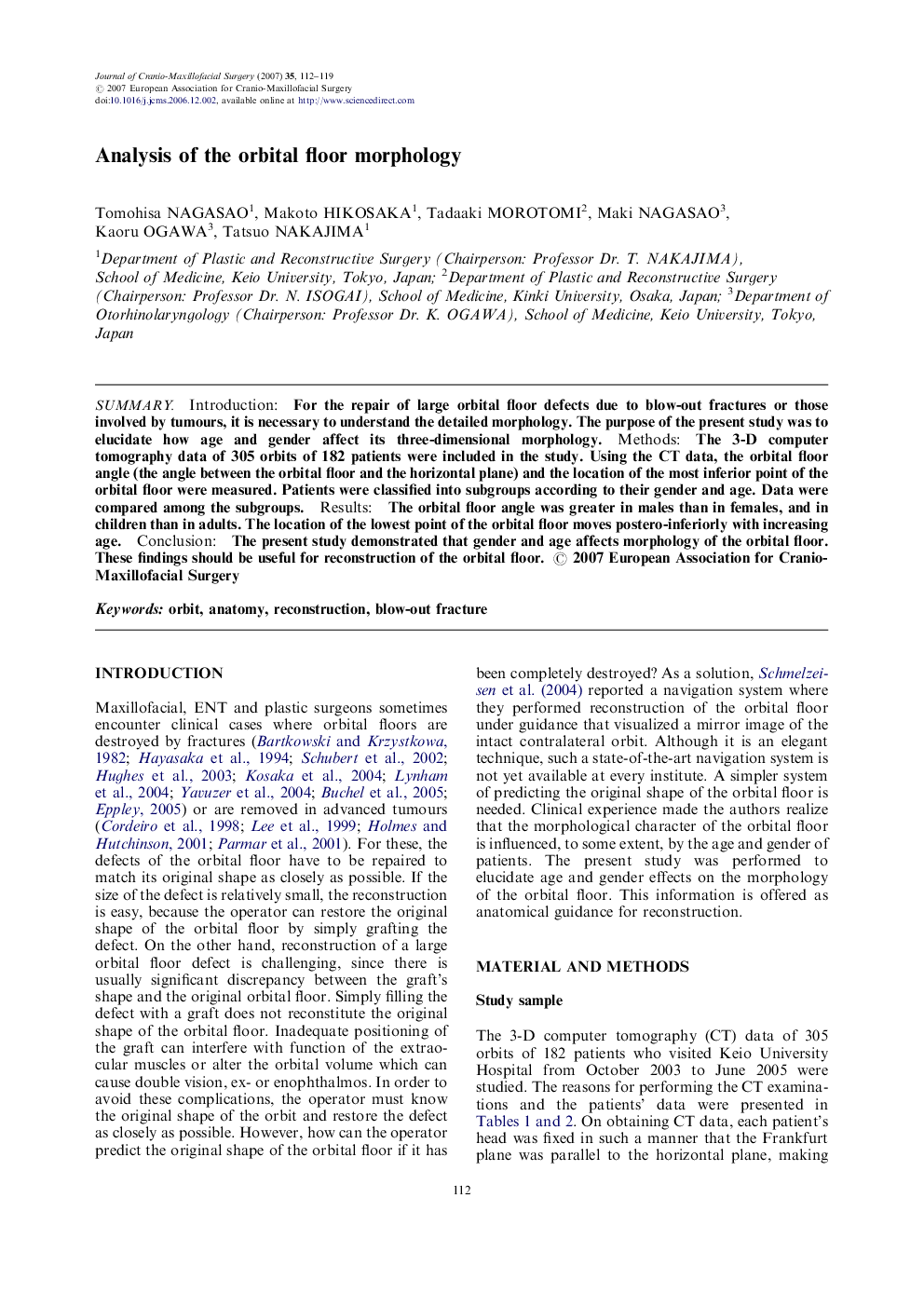| Article ID | Journal | Published Year | Pages | File Type |
|---|---|---|---|---|
| 3144299 | Journal of Cranio-Maxillofacial Surgery | 2007 | 8 Pages |
SummaryIntroductionFor the repair of large orbital floor defects due to blow-out fractures or those involved by tumours, it is necessary to understand the detailed morphology. The purpose of the present study was to elucidate how age and gender affect its three-dimensional morphology.MethodsThe 3-D computer tomography data of 305 orbits of 182 patients were included in the study. Using the CT data, the orbital floor angle (the angle between the orbital floor and the horizontal plane) and the location of the most inferior point of the orbital floor were measured. Patients were classified into subgroups according to their gender and age. Data were compared among the subgroups.ResultsThe orbital floor angle was greater in males than in females, and in children than in adults. The location of the lowest point of the orbital floor moves postero-inferiorly with increasing age.ConclusionThe present study demonstrated that gender and age affects morphology of the orbital floor. These findings should be useful for reconstruction of the orbital floor.
